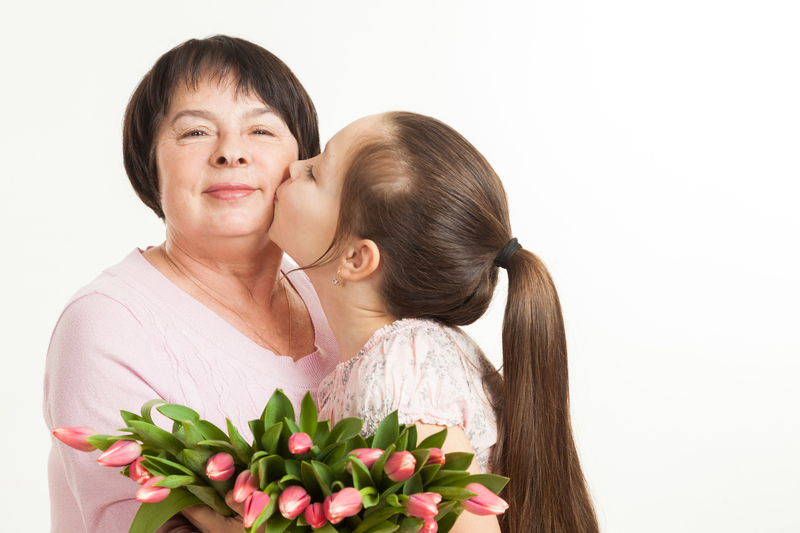Growing Hydrangeas Indoors and Out: Best Practices for Care
Hydrangeas are one of the world's favorite flowering plants, cherished for their large, luxuriant blooms and ability to brighten gardens, patios, and living spaces. Whether you're hoping to cultivate hydrangeas indoors for an elegant home accent or dreaming of a vibrant outdoor hydrangea display, understanding the right care practices will help your plants thrive. This comprehensive guide covers everything you need to know about growing hydrangeas indoors and outdoors, from selecting the right varieties to mastering watering, feeding, and pruning techniques.
Understanding Hydrangeas: An Overview
Hydrangeas belong to the genus Hydrangea, which includes more than 70 species and hundreds of captivating cultivars. Their beautiful, pompom-like blossoms range from dazzling blues and pinks to creamy whites and deep purples, making them a standout in any indoor or outdoor setting. When it comes to hydrangea care, one size does not fit all--different varieties may have slightly unique needs.
Main Types of Hydrangeas for Indoor and Outdoor Growing
- Hydrangea macrophylla (Bigleaf hydrangea): Known for large mophead or lacecap flowers, this type is often chosen for indoor hydrangea displays.
- Hydrangea paniculata (Panicle hydrangea): Features cone-shaped flower clusters, hardy and reliable outdoors.
- Hydrangea arborescens (Smooth hydrangea): Adaptable and drought-tolerant, ideal for outdoor shrubs.
- Hydrangea quercifolia (Oakleaf hydrangea): Distinguished by foliage that resembles oak leaves, best for outdoor landscapes.
Choosing the right hydrangea for your specific indoor or outdoor space is the first step towards successful cultivation.

Selecting and Planting Hydrangeas Indoors
Best Varieties for Indoor Growth
Not all hydrangeas thrive equally well indoors. Look for compact cultivars such as:
- 'Mini Penny' (a dwarf Bigleaf hydrangea)
- 'Little Lime' (a petite panicle hydrangea)
- 'Endless Summer' (adaptable for containers and repeated blooming)
Choosing the Right Container
Your container should have excellent drainage and be large enough to accommodate your hydrangea's root system. Select pots made from terracotta or glazed ceramic for breathability. Place a saucer underneath to catch excess water, but avoid standing water, which leads to root rot.
Potting Mix Requirements
- Use a peat-based, well-draining potting soil.
- Mix in perlite or coarse sand for aeration.
- PH is important: 5.5 to 6.5 is ideal for most hydrangeas indoors. The right pH can affect the flower color of some types!
Tip: For blue flowers, slightly more acidic soil is required, whereas alkaline soils promote pink hues.
Caring for Hydrangeas Indoors
Light Requirements
Place your indoor hydrangeas near a bright, east-facing window with indirect sunlight. Too much direct sun may scorch the leaves, while insufficient light will reduce flowering. If natural light is lacking, supplement with grow lights for at least 6 hours daily.
Watering and Humidity
- Consistency is key: Hydrangeas like evenly moist (but not soggy) soil. Water when the top inch of soil feels dry.
- Humidity boost: Indoor environments, especially in winter, can be dry. Mist leaves regularly or use a pebble tray with water to maintain humidity.
- Avoid extremes: Never let the pot sit in stagnant water, but don't allow the plant to wilt due to drought.
Feeding Indoor Hydrangeas
During the growing season (spring to summer), feed your plant monthly with a balanced, water-soluble fertilizer. Avoid over-fertilizing, as this can lead to lush foliage but fewer blooms.
Temperature & Seasonal Considerations
Hydrangeas enjoy temperatures around 65-75?F (18-24?C) during the day and slightly cooler at night. Avoid placing your plant near radiators, air conditioners, or drafty windows. In autumn, reduce watering as the plant enters dormancy, and move pots to a cool, bright spot if possible.
Pruning and Maintenance Indoors
- Remove spent blooms by snipping just above the first set of healthy leaves.
- Inspect regularly for spider mites, aphids, or powdery mildew.
- Repot every 2-3 years to refresh the soil and manage root growth.
Outdoor Hydrangea Cultivation: Best Practices
Site Selection and Soil Preparation
When growing hydrangeas outdoors, the right placement is critical:
- Light: Most hydrangeas prefer morning sun and afternoon shade, though Panicle types can tolerate more sun.
- Soil: Prepare well-drained, fertile soil amended with compost or organic matter.
- Soil pH: Test and adjust soil pH to encourage desired bloom color for Bigleaf varieties.
Planting Techniques
- Dig a hole twice as wide as the root ball, matching the plant's depth.
- Loosen the roots gently before planting.
- Backfill with amended soil and water thoroughly upon planting.
- Mulch around the base to conserve moisture and suppress weeds.
Watering Outdoor Hydrangeas
- In the first year, keep soil consistently moist--especially during dry spells.
- Mature hydrangeas typically need deep watering 1-2 times weekly.
- Morning watering is best to avoid fungal issues.
Fertilizing Outdoor Hydrangeas
- Apply a slow-release shrub fertilizer in early spring.
- For flower color manipulation (Bigleaf hydrangeas), use aluminum sulfate for blue or garden lime for pink flowers.
Pruning: When and How?
Pruning needs vary by hydrangea type:
- Bigleaf & Oakleaf hydrangeas: Prune lightly after flowering, as they bloom on old wood.
- Panicle & Smooth hydrangeas: Prune in late winter or early spring; they bloom on new growth.
Remove dead, damaged, or crossing branches to maintain plant health and shape.
Hydrangea Bloom Color: How to Manipulate and Maintain
One of the most fascinating features of hydrangeas is their ability to change flower color based on soil chemistry. This phenomenon is most prominent in Bigleaf and some Mountain hydrangeas:
- Blue blooms: Achieved in acidic soils (pH 5.2-5.5) with available aluminum. Add aluminum sulfate to the soil.
- Pink blooms: Grow in alkaline soils (pH 6.0-6.2), which limits aluminum uptake. Add lime to increase pH.
- White varieties: Generally unaffected by soil pH.
Tip: Always test your soil before adding amendments and follow product instructions carefully to avoid plant injury.
Common Hydrangea Problems and Solutions
Indoor Challenges
- Leaf drop: Often due to too little light, overwatering, or dry air. Adjust location and care routine accordingly.
- Pest issues: Spider mites and aphids can be treated with gentle insecticidal soap.
- Wilting: Check for root rot (overwatering) or underwatering. Repot if roots appear mushy or blackened.
Outdoor Troubles
- Powdery mildew: Improve air circulation and avoid overhead watering.
- Blossom drop: May occur after late frosts or during drought. Protect plants with mulch and frost covers when necessary.
- No blooms: May be due to pruning at the wrong time or insufficient light. Reassess care practices.
Overwintering Hydrangeas
Indoor Hydrangeas in Winter
- Reduce watering but don't let soil dry out completely.
- Move to a cool, well-lit area if possible; avoid drafts and heat sources.
- If possible, allow the plant to rest with less light and cooler temperatures (around 45-50?F / 7-10?C).
Outdoor Hydrangeas in Cold Climates
- Apply a thick layer of mulch around the base of the plant to protect roots.
- Wrap stems with burlap or horticultural fleece in very cold zones.
- Consider containerizing and moving sensitive varieties into a sheltered location.
Propagating Hydrangeas for Indoor and Outdoor Enjoyment
Hydrangeas are easy and rewarding to propagate using the following methods:
- Stem cuttings: In late spring or early summer, snip 4-6-inch stems and root them in moist potting mix indoors.
- Layering: Bend a low-growing branch to the ground, cover with soil, and wait for roots to form before cutting away the new plant.
- Division: In early spring or fall, divide the root ball of mature, healthy plants.
Success with propagation ensures you can fill your home and garden with beautiful hydrangeas year after year.

Frequently Asked Questions About Growing Hydrangeas Indoors and Outdoors
Can all hydrangeas be grown indoors?
Not all hydrangea varieties are suitable for indoor growth. Compact, repeat-blooming types like 'Mini Penny' or 'Endless Summer' work best indoors. Most hydrangeas, however, are happiest outdoors where they can reach their full size.
How long do hydrangea blooms last?
Blooms can last anywhere from several weeks to several months, especially if kept cool indoors or in partial shade outdoors. Deadheading spent flowers promotes new bloom formation and maintains overall plant appearance.
What should I do if my hydrangea leaves turn yellow?
Yellowing may indicate overwatering, underwatering, or poor soil drainage. Adjust your watering schedule and ensure the container or garden site offers good drainage.
Conclusion: Enjoying Hydrangeas in Your Home and Garden
With the right knowledge and a little practice, growing hydrangeas indoors and outdoors can be richly rewarding. These versatile, breathtaking plants bring color and life to nearly any environment. Choose the right variety, provide appropriate light, water, and nutrition, and don't be afraid to experiment with soil amendments for that perfect blue or pink bloom.
Remember:
- Select compact cultivars for indoor gardens and more robust types for your yard.
- Practice proper watering, feeding, and pruning for health and bounty.
- Enjoy the magical ability to influence flower color through soil pH.
Embrace these best practices for hydrangea care, and you'll enjoy stunning, healthy plants no matter where you choose to grow them. Share your success stories or questions below--there's always more to learn and love about hydrangeas!

